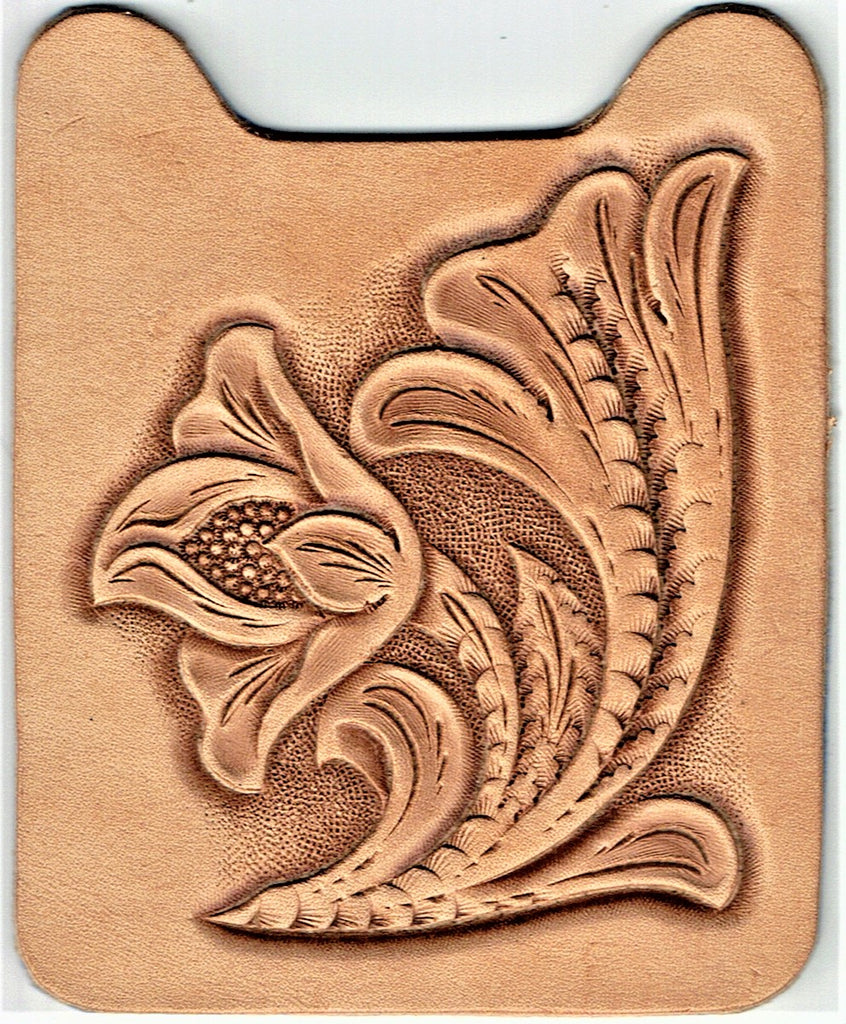
Tooling needs to be done on leather that is soft enough to cut and carve, but firm enough for stamping. However, if we just use any type of leather for tooling and carving, the results will likely vary. Leather for tooling, carving, and engraving can be any type of leather. Leather for Tooling, Carving, and Engraving: What is?

If tooling is not yet complete while the leather is wet you can always repeat the steps to remoisten the leather. Moreover, we can only work with leather once it is moist or wet.

When leather is moistened it will begin to return to its natural color so do not be alarmed. It is important that we apply the water evenly as possible on both sides. To moisten the leather we rub a damp sponge on both the flesh side and the grain side of the leather. This step is necessary for us to shape and manipulate the leather's surface. Wetting the leather will make the fibers swell and soften. This process of moistening the leather is what we call casing. What better way to moisten leather than to use water. In order for the leather to be workable, it needs to be moist. The preparation process is pretty simple. To work with vegetable tanned leather we must first prepare. This leather is vegetable-tanned leather. What we need is a type of leather that is soft enough for cutting yet firm enough for stamping. Likewise, we would not want leather that is too soft, flexible, or bouncy that it erases the stamp impressions. This is because some types of leather are too stiff to cut with leather stamps and tools. While technically any leather can be tooled it does not produce the best result. To create those beautiful designs and patterns we need to prepare the leather. How Is Tooling Leather Prepared to be Worked These are usually for designs that require more thickness than the normal cut. Likewise, different layers of leather can also be glued together to create thick leather. For example, a belt will require a thicker cut of leather than a knife sheath or wallet. The thickness of the leather will vary from one project to another. Moreover, tooling leathers also come in different thicknesses. However, the final product will not be nearly as good as the vegetable-tanned leather. For example, you can use bridle and rawhide as substitutes. Likewise, since you are trying to etch designs onto the leather, you would generally need softer leather. Besides vegetable tanned leather, there are also other types of leather that can be used as tooling leather. Unlike other methods of tanning, the vegetable tanning process produces leather that is a bit softer and easier to work with. Of all the types of leather, why would they prefer vegetable tanned leather? The answer is quite simple. However, they generally use vegetable-tanned leather. Going back to the question, tooling leather can be any leather available. Conclusively, tooled leather is the leather that has gone through the tooling process or creative design. Tooling leather on the other hand is the leather that we use to make those beautiful designs. Tooling is the process of engraving or embellishing designs on leather. We must first understand the difference between tooling and tooling leather. What exactly is tooling leather? To answer that questions we must first get a few things straight. Let us get to know more about tooling, tooling leather, the process of tooling, and many more. While almost all types of leather can be tooled, tooling leather is the best leather for the job. They are those fascinating detailed ornamental works that you see on leather.

Tooling leather is what you may commonly see on book covers, wallets, belts, holsters, and other leather goods. Other than its unique patina, how do we turn leather into something equally mesmerizing? A technique that people use to give the leather a bit of style is tooling.

We all know for a fact that leather is beautiful.


 0 kommentar(er)
0 kommentar(er)
